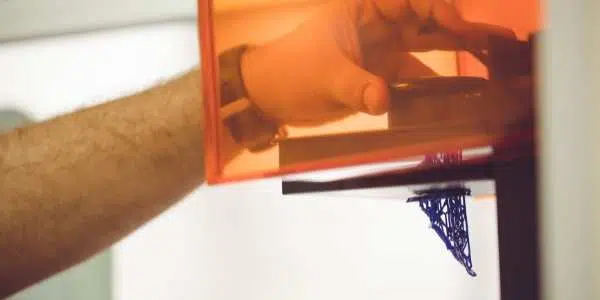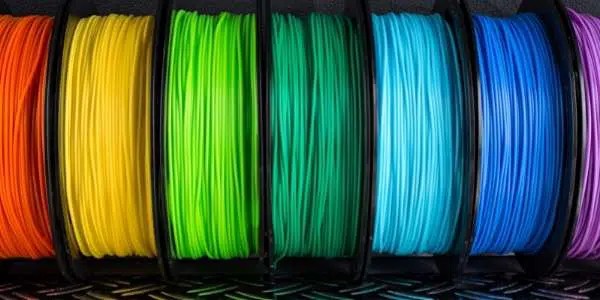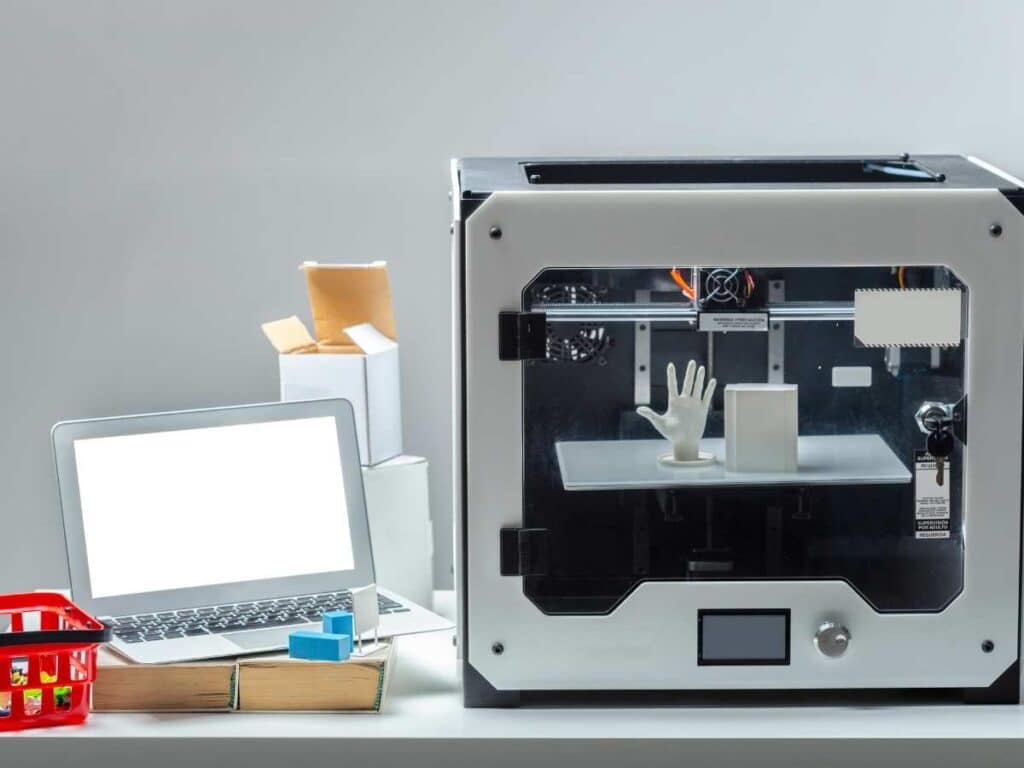With 3D printing now accessible to home users, we can now conveniently print a wide variety of three-dimensional objects. However, it’s still not as commonplace as printing photos and documents on paper. Aside from the fact that 3D printing has a steep learning curve and can be very complicated and time-consuming, 3D printers also don’t come cheap.
Here are 4 reasons why 3D printers are so expensive:
- 3D printers use advanced printing technology.
- 3D printers have high-precision components.
- 3D printers aren’t high-volume products.
- Making 3D printers involves initial costs and investments.
In this article, I’ll talk about the various reasons 3D printers are so expensive, how the word “expensive” can be relative, and why the price range for 3D printers is very broad. Of course, I also can’t leave out other costs and expenses associated with printing 3D objects aside from the printer itself.
1. 3D Printers Use Advanced Printing Technology
Compared to our regular ink-based printers, 3D printers use more advanced printing technology and processes to produce three-dimensional objects accurately.
The 3D printers that use fused deposition modeling or FDM technology are cheaper compared to resin printers. With an FDM printer, you will need to feed the plastic filament, and it will melt this filament and extrude it layer by layer until it finishes forming your 3D object.
Meanwhile, with a resin or full-color stereolithographic 3D printer, resin or photopolymer hardens when exposed to UV light. This means UV light draws a picture on a build plate and builds it up layer by layer. This kind of 3D printer delivers high precision.
There are also 3D printers that use selective laser sintering or SLS technology, where a laser is used to fuse tiny amounts of nylon powder and trace the form of your 3D model layer by layer.
You can check this page to get an idea of how much 3D printers cost depending on the printing technology or process they’re using.
This tells you that the more complicated and advanced the technology a 3D printer uses, the faster the printing process and the more precise and higher quality the print turns out to be. It also follows that the more expensive that printer will be.
2. 3D Printers Have High-Precision Components
3D printers, especially the commercial- and industrial-grade ones, are meticulously manufactured and engineered equipment made up of precision motion components that allow them to print reliable and exact three-dimensional models, prototypes, and custom parts.
These components are responsible for giving you prints that are accurate down to the littlest geometrical feature. They’re not something manufacturers can get off any store shelf.
According to field service engineer John P. Benfield, in answer to a question posted on Quora, high-end 3D printers, especially the industrial ones, are loaded with sensors, self-tuning and monitoring software, feedback loops, and high-precision components. These printers would also entail a whole lot of calibration, which is done either at the factory or by the engineer who installs them.
So, while there are low-end 3D printers that aren’t very expensive, the good-quality ones that cost hundreds or thousands of dollars boast far more precise engineering, manufacturing, and testing, with higher tolerance components and subsystems to ensure outstanding performance.
In other words, you pay a premium for a machine that’s guaranteed to deliver a certain quality of print regardless of anything you throw at it.
3. 3D Printers Aren’t High-Volume Products
3D printers are not incredibly high-volume products. They are produced in limited quantities because of the high capital costs and the amount of work that goes into making them. Demand is also not as high as that of regular ink-based printers. Because of this, it is hard for 3D printers to get price breaks.
Needless to say, the cost of 3D printers will only go down if cheaper materials and methods are used and if manufacturers sell them in greater volumes.
4. Making 3D Printers Involves Initial Costs and Investments
Many costs contribute to a 3D printer’s final price. These include the costs associated with the manufacture, storage, shipping, quoting and even advertising and marketing of the 3D printer. Production costs include raw materials, equipment used to make the various parts and components, assembly, labor, and even packaging.
Of course, different printer sizes also involve variations in terms of manufacturing, and this affects pricing. For example, Benfield explained that the bigger the print area of your 3D printer, the higher the price. Scalability also doesn’t come cheap.
How Expensive 3D Printers Exactly Are
3D printers vary widely in terms of cost. To give you an idea about pricing, cheap entry-level consumer-quality printers range from $100 to $500, and hobbyist 3D printers are priced at $400 to $1,500.
Meanwhile, higher-end ones for enthusiasts and professionals can cost anywhere from $1,500 to $20,000, and enterprise- or industrial-quality 3D printers have a price tag of $20,000 to $100,000.

The huge disparities in prices are because there are many different types of 3D printers based on size, quality, features, performance, durability, speed, and place of manufacture. Printing technology and the process are also huge factors when determining the price. The more expensive and advanced the printer is, the harder and more costly it is to operate, too.
Here’s how the various categories or levels of 3D printers specifically differ from each other:
Entry-Level Printers
Entry-level 3D printers, priced anywhere from $100 to $500, are primarily like toys. These are the ideal printers to get if you’re still learning about 3D printing and if you’re still experimenting.
These printers can only print small-scale 3D objects measuring 3 to 4 inches (7.6 to 10 centimeters) in length, width, and height using only one material, usually low-temperature ones like PLA. They’re also quite noisy and slow when printing and produce poor-quality prints.
Hobbyist Printers
Hobbyist printers cost anywhere from $400 to $1,500, and they’re perfect for people who like printing 3D objects as a hobby. 3D printers in this category are capable, but you’ll need to spend time assembling and calibrating your printer. You’ll also have to do some testing before you can get to printing.
Compared to entry-level printers, hobbyist printers produce 3D prints that are a bit larger at about 5 to 6 inches (12.7 to 15.2 centimeters) in each dimension. They also print a little faster and may even be able to print using a few different materials. However, their print quality is also lacking, and most of them aren’t designed to run for long periods.
You can expect to do a lot of maintenance work and repairs to keep these hobbyist printers running smoothly.
Enthusiast Printers
Enthusiast 3D printers are solid printers that can deliver prints about 8 to 12 inches (20.3 to 30.5 centimeters) in each dimension. They cost anywhere from $1,000 to 4,000. Printers under this category produce decent-quality prints and have a good-enough printing speed. You’ll also have a good selection of materials that you can use for your prints.
These printers, however, come with limitations. For instance, the prints aren’t a hundred percent durable, and they’ll be requiring significant maintenance and repairs to keep them fully operational.
Professional or Performance-Quality Printers
Professional or performance-quality printers are priced between $4,000 to $20,000. These printers deliver great performance and can print good-quality parts using a wide variety of materials, including higher-temperature ones like nylons, ABS, and Polycarbonate, provided there are print profiles optimized for each material.
This type can also print larger 3D objects, usually 12 inches (30.48 centimeters) in each dimension, thanks to larger enclosures or build areas.
The best performance 3D printers can print parts quickly and at the same time maintain excellent print resolution. As such, these printers are great for use in education and a wide variety of commercial environments.

Enterprise or Industrial-Quality 3D Printers
Enterprise or industrial-quality 3D printers are the most expensive 3D printers, with prices ranging from $20,000 to $100,000. As such, only businesses can afford them and the high operating costs associated with their use and maintenance.
Printers in this category can do high-quality and large-scale prints at great speeds. They also boast metal fabricated exteriors, a very durable construction, and slick interfaces. Manufacturers of this type of 3D printer charge a lot for the base printer alone, but they also charge fees for annual maintenance contracts.
Your choices of materials for this kind of printer are expensive and surprisingly limited, though. And most often, your printer’s manufacturer will sell you proprietary materials at a premium, typically three to five times more expensive than what these materials cost on the market.
Other Costs Associated With 3D Printing
When it comes to 3D printing, your expenses don’t stop when you purchase a 3D printer. Just like in regular printers, wherein you will need to buy paper and ink when it runs out, 3D printers will also require certain materials to create 3D prints. In other words, your 3D printer and the printing material it uses will always go hand in hand when it comes to printing costs. And different 3D printers use different materials, depending on their printing technology and method.
Not surprisingly, the more advanced and expensive your 3D printer is, the more expensive the materials it will be using. And just like the prices for the printers, there are also huge discrepancies in the prices for these materials.
As such, when you’re choosing the right printer for your needs, you also need to know the quality of the materials it can accommodate, how much these materials cost, and whether they’d also be sustainable for you budget-wise.
The cheapest or most affordable among the various 3D printing materials are thermoplastic filaments used for FDM printers. This category of materials also includes polylactic acid (PLA), acrylonitrile butadiene styrene (ABS), and polyethylene terephthalate glycol (PETG). These thermoplastics are sold per kilogram and don’t usually cost more than $30.
More specifically, PLA and ABS have an average price range of $15 to $30 per kilo, while PETG costs an average of $16 to $24 per kilo.
Meanwhile, SLS printers use nylon powders, and these flexible polymers come in different types, too. There are thermoplastic polyurethanes or TPU, polyamides or PA, and thermoplastic elastomers or TPE. The average price for TPU and TPE is $87 to $110 per kilogram.
Other materials include:
- Nylon, which costs around $50 to $73 per kilo
- Polycarbonate, which ranges from $30 to $93 per kilo
- Acrylonitrile styrene acrylate or ASA, which costs around $30 to $50 per kilo

Resin, on the other hand, is the more expensive material. It has an average price of $40 to $300 per liter.
Some printers also use metals like stainless steel and aluminum for printing 3D metal objects.
To know more about 3D printer filaments, check out this ultimate guide.
Other Production Costs
3D printing may also involve post-processing or curing, finishing, and polishing works, so that you might need varnishes, paints, files, and other materials. It’s during this post-processing phase of 3D printing that you get rid of the imperfections of your print, smoothen its surface, and get rid of any support structures.
You can also apply the right colors that were otherwise not achieved by your filament by painting your 3D object using oil, lacquer, enamel, or acrylic paint. Moreover, since 3D printing involves a 3D design, you’ll need CAD software and a slicer to do the designing for you. The print will be based on this CAD design, including special instructions for your printer to execute.
While there are 3D design softwares you can download on your computer free of charge, the more advanced and professional-quality ones are proprietary, and you will have to buy them. So you might need to add this to your initial costs or investment.
Aside from all these printing materials and post-processing essentials, higher-end and large-sized 3D printers will also require regular professional maintenance services. Of course, this will need to be included in your overall 3D printing costs, too.
- Written by:
- Ben
- Last updated:
- 11/11/2023
About Ben
I started 3D printing since 2013 and have learned a lot since then. Because of this I want to share my knowledge of what I have learned in the past years with the community. Currently I own 2 Bambulab X1 Carbon, Prusa SL1S and a Prusa MK3S+. Hope you learn something from my blog after my years of experience in 3D printing.

